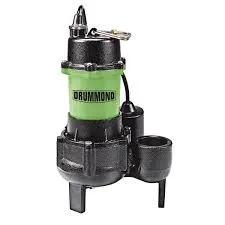English
- Afrikaans
- Albanian
- Amharic
- Arabic
- Armenian
- Azerbaijani
- Basque
- Belarusian
- Bengali
- Bosnian
- Bulgarian
- Catalan
- Cebuano
- Corsican
- Croatian
- Czech
- Danish
- Dutch
- English
- Esperanto
- Estonian
- Finnish
- French
- Frisian
- Galician
- Georgian
- German
- Greek
- Gujarati
- Haitian Creole
- hausa
- hawaiian
- Hebrew
- Hindi
- Miao
- Hungarian
- Icelandic
- igbo
- Indonesian
- irish
- Italian
- Japanese
- Javanese
- Kannada
- kazakh
- Khmer
- Rwandese
- Korean
- Kurdish
- Kyrgyz
- Lao
- Latin
- Latvian
- Lithuanian
- Luxembourgish
- Macedonian
- Malgashi
- Malay
- Malayalam
- Maltese
- Maori
- Marathi
- Mongolian
- Myanmar
- Nepali
- Norwegian
- Norwegian
- Occitan
- Pashto
- Persian
- Polish
- Portuguese
- Punjabi
- Romanian
- Russian
- Samoan
- Scottish Gaelic
- Serbian
- Sesotho
- Shona
- Sindhi
- Sinhala
- Slovak
- Slovenian
- Somali
- Spanish
- Sundanese
- Swahili
- Swedish
- Tagalog
- Tajik
- Tamil
- Tatar
- Telugu
- Thai
- Turkish
- Turkmen
- Ukrainian
- Urdu
- Uighur
- Uzbek
- Vietnamese
- Welsh
- Bantu
- Yiddish
- Yoruba
- Zulu
Telephone: +86 13120555503
Email: frank@cypump.com
Sep . 25, 2024 22:46 Back to list
slurry tanker pump parts
Understanding Slurry Tanker Pump Parts A Comprehensive Overview
Slurry tanker pumps play a crucial role in various industries, particularly in agriculture, mining, and waste management. They are designed to transport mixtures of solids and liquids—commonly referred to as slurries—efficiently and effectively. The performance and longevity of these pumps hinge significantly on their components. In this article, we’ll explore the essential parts of slurry tanker pumps and their functions.
1. Pump Housing
The pump housing is the outer shell that encases the internal components. It is designed to withstand high pressures and protect the internal parts from external damage. Often constructed from durable materials such as cast iron or stainless steel, the housing provides structural integrity and ensures the pump operates under various environmental conditions.
2. Impeller
One of the most vital components of a slurry pump is the impeller. This rotating part is responsible for transferring energy to the slurry, generating the necessary flow and pressure. Impellers used in slurry pumps are typically designed with thicker blades and larger diameters to handle the abrasive nature of the solid particles within the slurry. Furthermore, the design—whether open, semi-open, or closed—can affect the pump's efficiency, depending on the type of slurry being handled.
3. Suction and Discharge Ports
The suction port draws the slurry into the pump, while the discharge port directs it out of the pump system. These ports are critical as they need to accommodate various pipe sizes and configurations. The design of the ports impacts the flow dynamics and can influence the overall pumping efficiency. Both ports should be constructed to minimize wear and tear, employing materials resistant to abrasion.
4. Wear Plates
slurry tanker pump parts

Given the abrasive nature of slurries, wear plates protect the pump’s internal components from excessive degradation. These plates can be replaceable, enabling maintenance teams to swap out worn parts without needing to replace the entire pump. High-quality wear plates are essential for extending the pump’s lifespan and maintaining optimal performance.
5. Seals
Seals are crucial in preventing leaks and ensuring the reliable operation of the pump. They keep the slurry contained within the pump housing and protect other components from contamination by external materials. Various types of seals are used, including mechanical seals and packing seals, each providing different advantages depending on the operational demands and characteristics of the slurry.
6. Bearings
Bearings support the rotating shaft of the pump and reduce friction as it turns. They are instrumental in ensuring smooth operation and prolonging the pump's life. The choice of bearings is influenced by the expected load, speed, and operating environment; thus, they must be selected with careful consideration.
7. Drive Shaft
The drive shaft connects the impeller to the motor, enabling the transfer of mechanical energy. It must be constructed to handle the torque and stress produced during operation. The shaft's alignment is critical for efficient operation, as misalignment can lead to wear and eventual failure.
Conclusion
In summary, understanding the components of slurry tanker pumps is essential for anyone involved in industries relying on such equipment. Each part, from the housing to the impeller, plays a significant role in the pump's efficiency, durability, and overall performance. Regular maintenance and timely replacement of worn parts can lead to more reliable operations, ultimately contributing to increased productivity and reduced downtime. By prioritizing the health of these parts, companies can ensure their slurry pumps operate at peak efficiency, safeguarding their investment in machinery.
-
Horizontal Split Case Pump with GPT-4 Turbo | High Efficiency
NewsAug.01,2025
-
ISG Series Pipeline Pump - Chi Yuan Pumps | High Efficiency, Durable Design
NewsAug.01,2025
-
Advanced Flue Gas Desulfurization Pump with GPT-4 Turbo | Durable & Efficient
NewsJul.31,2025
-
ISG Series Vertical Pipeline Pump - Chi Yuan Pumps | Advanced Hydraulic Design&Durable Construction
NewsJul.31,2025
-
ISG Series Vertical Pipeline Pump - Chi Yuan Pumps | Energy Efficient & Low Noise
NewsJul.31,2025
-
pipeline pump - Chi Yuan Pumps Co., LTD.|High Efficiency&Low Noise
NewsJul.31,2025










